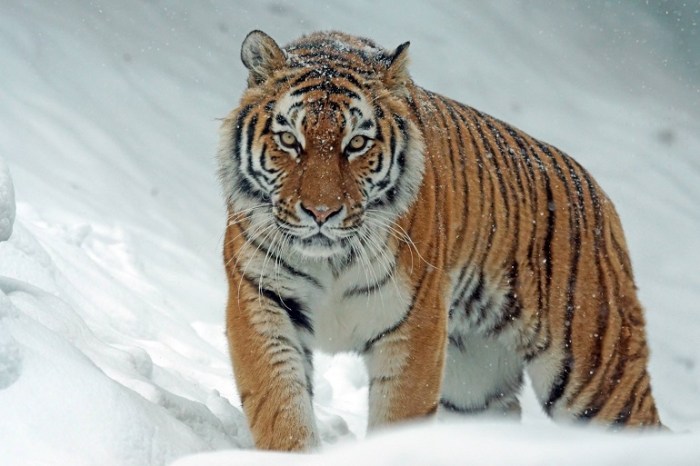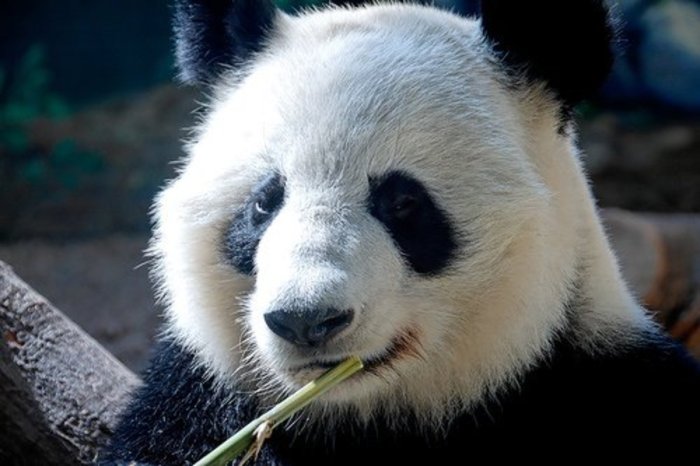
Endangered animal species 2025 sets the stage for this enthralling narrative, offering readers a glimpse into a story that is rich in detail with entertaining interactive style and brimming with originality from the outset.
In a world where the delicate balance of wildlife is constantly under threat, understanding the current status of endangered animal species and the importance of conservation efforts becomes paramount for the survival of these precious creatures.
Endangered Animal Species 2025
Currently, the status of endangered animal species globally remains critical, with many species facing the risk of extinction. This alarming trend calls for immediate action to prevent further loss of biodiversity.
Main Threats to Endangered Animal Species
The main threats contributing to the endangerment of animal species include habitat loss due to deforestation, climate change, pollution, poaching, and illegal wildlife trade. These factors have significantly impacted the populations of many species, pushing them towards the brink of extinction.
Importance of Conservation Efforts
Conservation efforts play a crucial role in preserving endangered animals by protecting their habitats, implementing laws to prevent poaching and illegal trade, and raising awareness about the importance of biodiversity. These efforts are essential to ensure the survival of endangered species and maintain a healthy ecosystem.
Animals

Human activities have had a significant impact on animal habitats, leading to the decline of many species around the world. Deforestation, pollution, climate change, and illegal wildlife trade are some of the main factors contributing to the loss of natural habitats for animals. These activities disrupt ecosystems, reduce biodiversity, and threaten the survival of many endangered species.
Successful Conservation Projects
Conservation projects play a crucial role in protecting endangered animal species and restoring their populations. One successful example is the conservation efforts for the giant panda in China. Through habitat restoration, anti-poaching measures, and captive breeding programs, the giant panda population has increased in recent years, moving it from endangered to vulnerable on the IUCN Red List.
- The Black Rhino Conservation Project in Africa focuses on protecting black rhinos from poaching and habitat loss, leading to a gradual increase in their population.
- The Sea Turtle Conservation Program in Costa Rica works to protect sea turtle nesting sites and reduce threats from fishing nets and pollution, helping to stabilize sea turtle populations.
- The Snow Leopard Trust in Central Asia implements conservation programs to reduce human-wildlife conflict and protect the snow leopard’s natural habitat, contributing to the preservation of this endangered species.
Zoos and Wildlife Sanctuaries
Zoos and wildlife sanctuaries play a vital role in preserving endangered animals through captive breeding programs, research, and public education. These facilities provide a safe environment for endangered species to breed and recover, while also raising awareness about the importance of conservation and biodiversity.
Zoos like the San Diego Zoo and the Smithsonian National Zoo actively participate in species survival plans to breed endangered animals and reintroduce them into the wild when possible.
Wildlife sanctuaries like the David Sheldrick Wildlife Trust in Kenya rescue and rehabilitate orphaned elephants, helping to secure the future of this endangered species.
Livestock
Livestock farming plays a significant role in the decline of certain animal populations due to habitat destruction, competition for resources, and the spread of diseases. As the demand for meat, dairy, and other livestock products increases, more land is cleared for grazing and feed crops, leading to deforestation and fragmentation of natural habitats. This, in turn, displaces and threatens the survival of many wildlife species.
Sustainable Practices in Livestock Farming
- Implementing rotational grazing techniques to prevent overgrazing and soil erosion.
- Using organic and locally sourced feed to reduce the environmental impact of livestock farming.
- Adopting water conservation methods to minimize water usage and pollution from animal waste.
- Investing in renewable energy sources to reduce greenhouse gas emissions from livestock operations.
- Promoting agroforestry practices to restore biodiversity and provide habitat for wildlife.
Ethical Farming and Its Impact on Endangered Animal Species
Ethical farming focuses on animal welfare, environmental sustainability, and social responsibility in agricultural practices.
- By prioritizing animal welfare, ethical farming aims to minimize stress and suffering in livestock, leading to healthier and more sustainable production.
- Implementing ethical farming practices can help reduce the negative impact of livestock farming on endangered animal species by promoting humane treatment of animals and conservation of resources.
- Supporting ethical farming initiatives can create a more harmonious relationship between agriculture and wildlife conservation, ultimately benefiting both farmers and endangered species.
Wild Animals

Wild animals play a crucial role in maintaining the balance of ecosystems around the world. They contribute to biodiversity and help regulate various ecological processes.
Conservation Status of Wild Animal Species
- Elephants: While elephant populations in Africa are declining due to poaching and habitat loss, conservation efforts have led to stable populations in some regions.
- Tigers: Tigers are critically endangered, with only a few thousand left in the wild. Conservation efforts focus on protecting their habitats and combating illegal wildlife trade.
- Polar Bears: Climate change is a significant threat to polar bear populations, as melting sea ice affects their hunting grounds. Conservationists work to address climate change and protect polar bear habitats.
Significance of Biodiversity in Ecosystems
Biodiversity is essential for the health of ecosystems as it ensures resilience and stability. A diverse range of species helps ecosystems adapt to environmental changes and provides various ecosystem services essential for human well-being.
Challenges Faced by Conservationists
- Habitat Loss: The destruction of natural habitats due to human activities like deforestation and urbanization poses a significant challenge to wildlife conservation.
- Illegal Wildlife Trade: Poaching and trafficking of wild animals for their body parts or as exotic pets threaten many species with extinction.
- Climate Change: Rising temperatures, changing precipitation patterns, and extreme weather events impact wildlife habitats and food sources, making it challenging for species to survive.
Outcome Summary
As we delve into the realm of endangered animal species 2025, it becomes evident that our actions today will shape the future of wildlife tomorrow. By exploring the challenges, successes, and ethical considerations surrounding these creatures, we pave the way for a more harmonious coexistence between humans and animals.
Answers to Common Questions
How can I contribute to the conservation of endangered animal species?
You can support organizations dedicated to wildlife conservation, reduce your carbon footprint, and spread awareness about the importance of protecting endangered animals.
Why is biodiversity crucial for maintaining healthy ecosystems?
Biodiversity ensures that various species play their roles in the ecosystem, contributing to ecosystem stability, resilience, and productivity.
What are the main threats faced by endangered animal species?
Endangered animal species face threats such as habitat destruction, poaching, climate change, pollution, and human-wildlife conflict.





